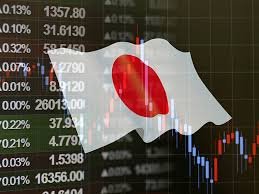The USD/JPY market is stuck in the late 154 yen range. Finance Minister Suzuki suggested the possibility of intervention is increasing, saying, “It can be seen that the environment is prepared, and we are in a position to intervene if necessary.” Additionally, BOJ Governor Ueda mentioned, “If there are changes in the economic and price outlook or risks, it could be a reason for a policy change,” hinting at a potential change in the BOJ’s inflation outlook in Friday’s report. While these should be factors for yen buying pressure, the market’s bias toward yen weakening remains unchanged. It seems the market mood is to wait and see the BOJ’s actual decisions before expecting significant movement in the yen exchange rate.
Meanwhile, the EUR/GBP market has become active since last weekend, trending towards a weaker pound. Although an ECB rate cut starting in June has been factored in by the market, there has been a recent trend of bringing forward the expected timing of rate cuts by the Bank of England as well. Last week, BOE Governor Bailey indicated that inflation is expected to drop significantly soon, and over the weekend, BOE Deputy Governor Ramsden expressed confidence in easing inflation persistence, mentioning that “April CPI in the UK is likely to bring it closer to the EU.” This background led to an expansion in buying euros and selling pounds over the weekend.
Looking ahead in the international markets, speeches are scheduled from BOE’s Haskel, BOE Chief Economist Pill, Italian Central Bank Governor Panetta, and German Bundesbank President Nagel, with the market likely to react to the hawkish-dovish stance from both the ECB and the BOE. With U.S. financial authorities entering a blackout period, attention on these events is expected to increase.
Economic indicators to be released include preliminary PMI data (April) from France, Germany, the Eurozone, the UK, and the USA. Additionally, the Hong Kong Consumer Price Index (March), the U.S. Richmond Fed Manufacturing Index (April), U.S. new home sales (March), and the Hungarian central bank’s policy rate (April) are scheduled. Differences in the PMI data across the U.S., UK, and Eurozone could lead to marked market reactions.
Gold has fallen sharply. I weighed it against Bitcoin and decided to let it go, but it was a mistake.
Tonight’s focus is on the U.S. Manufacturing PMI. Attention will be on the movement of the U.S. dollar thereafter.


